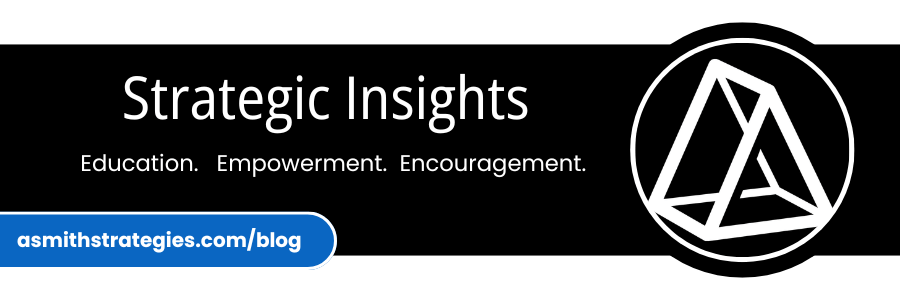
Unlock Your Business's Potential: 15 Essential KPIs for Service-Based Businesses
If you run a service-based business, you know that success isn't just about hard work; it's about smart work. But how do you know if you're working smart? How do you measure your progress, identify your strengths, and pinpoint areas for improvement? The answer lies in Key Performance Indicators, or KPIs.
KPIs are quantifiable metrics that provide a clear picture of how your business is performing against its goals. Think of them as the dashboard of your business, offering critical data on everything from customer satisfaction to employee productivity. By consistently tracking and analyzing the right KPIs, you can make informed decisions, drive growth, and ensure your business is on the right track.
Before we dive into the 15 essential KPIs, it’s important to remember that every business is unique. The examples and targets provided here are for illustrative purposes only. A KPI that works for a cleaning service with a two-hour delivery time might not make sense for a dry cleaner with a two-day turnaround. The key is to adapt these metrics to fit your specific industry, goals, and customer expectations.
Customer-Centric KPIs: Are Your Clients Happy?
Your customers are the lifeblood of your business. These KPIs focus on measuring their satisfaction, loyalty, and how effectively you're meeting their needs.
1. Customer Satisfaction Score (CSAT)
How happy are your customers? This is the most direct way to find out.
- The Question: Do your customers feel satisfied with the service you provide?
- The Formula: (Number of satisfied customers / Total number of customers surveyed) * 100
- The Example: A CSAT score of 85% means that 85% of your surveyed customers are satisfied with your service.
2. Net Promoter Score (NPS)
This metric goes beyond satisfaction to measure loyalty. Would your customers recommend you to others?
- The Question: How likely are your customers to be brand advocates?
- The Formula: (Number of Promoters - Number of Detractors) / Total Number of Respondents * 100
- The Example: An NPS of 50 indicates that you have a healthy percentage of promoters who are likely to spread positive word-of-mouth.
3. Service Level Agreement (SLA) Compliance
If you've promised a certain level of service, are you delivering?
- The Question: Are you meeting your service commitments, like response times or delivery deadlines?
- The Formula: (Number of requests met within SLA / Total number of requests) * 100
- The Example: 95% compliance with a 24-hour response time SLA shows that you consistently meet your promises to customers.
4. Average Service Delivery Time
Efficiency is key to customer satisfaction. How long does it take you to get the job done?
- The Question: Is there a bottleneck in your process that’s slowing you down?
- The Formula: Total time to deliver services / Total number of service requests
- The Example: An average delivery time of 2 hours can be a great benchmark for a home cleaning business that prides itself on speed.
5. First-Time Fix Rate (FTFR)
Nothing is more frustrating for a customer than a service that requires a second visit.
- The Question: Are you getting it right the first time, every time?
- The Formula: (Number of service requests resolved on the first visit / Total number of service requests) * 100
- The Example: An FTFR of 75% shows that you're resolving a majority of issues on the first attempt, which builds trust and reduces costs.
6. Complaint Resolution Time
When things go wrong, how quickly do you make them right?
- The Question: How fast are you addressing and resolving customer complaints?
- The Formula: Total time taken to resolve complaints / Total number of complaints
- The Example: An average resolution time of 24 hours demonstrates a commitment to quickly and effectively handling customer issues.
Business Health KPIs: Is Your Company Thriving?
These KPIs give you a holistic view of your business's financial and operational health. They help you understand profitability, efficiency, and growth.
7. Repeat Business/Retention Rate
Acquiring new customers is expensive. Retaining them is a sign of a strong business.
- The Question: What percentage of your customers are coming back for more?
- The Formula: (Number of repeat customers / Total number of customers) * 100
- The Example: A 70% retention rate indicates that a large portion of your clientele is loyal and satisfied.
8. Average Revenue per User (ARPU)
Are you getting the most out of your existing customer base?
- The Question: How much revenue does each customer generate, and can you increase that through upselling or cross-selling?
- The Formula: Total revenue / Total number of customers
- The Example: An ARPU of $150 per month suggests a healthy customer value.
9. Service Profitability
Is the service you're providing actually making you money?
- The Question: What is your profit margin for each service?
- The Formula: (Total revenue - Total cost) / Total revenue
- The Example: A 40% profit margin shows that after all expenses, a significant portion of your revenue is profit.
10. Cost per Service Request
How much does it cost you to deliver a single service?
- The Question: Are there ways to reduce your costs without sacrificing quality?
- The Formula: Total cost of delivering services / Total number of service requests
- The Example: A cost of $50 per service request helps you understand your baseline expenses and identify areas for efficiency.
11. Service Revenue Growth Rate
Is your business growing, shrinking, or staying stagnant?
- The Question: Is your service revenue increasing over time?
- The Formula: ((Current year revenue - Previous year revenue) / Previous year revenue) * 100
- The Example: A 15% revenue growth rate year-over-year is a strong indicator of a healthy, expanding business.
12. Service Availability/Uptime
This is especially critical for any business with an online booking system or a digital platform.
- The Question: Is your service always available when your customers need it?
- The Formula: (Total uptime / Total time) * 100
- The Example: 99% uptime for an online booking system means your customers can almost always book your services without interruption.
13. Conversion Rate
How effective are your sales and marketing efforts?
- The Question: What percentage of your leads are you converting into paying customers?
- The Formula: (Number of bookings / Number of leads) * 100
- The Example: A 20% conversion rate from leads to bookings shows that one in five of your potential customers becomes a paying client.
Employee & Operational KPIs: Is Your Team Working Smart?
Your team is your most valuable asset. These KPIs measure their productivity and satisfaction, which directly impacts the quality of your service.
14. Employee Utilization Rate
Are your employees' skills and time being used effectively?
- The Question: Are your employees spending their time on productive tasks?
- The Formula: (Total productive hours / Total available hours) * 100
- The Example: An 80% utilization rate shows that your team is productive and that you are efficiently allocating your resources.
15. Employee Satisfaction/Engagement
Happy employees lead to happy customers.
- The Question: Are your team members satisfied with their work?
- The Formula: (Number of satisfied employees / Total number of employees surveyed) * 100
- The Example: An employee satisfaction score of 85% indicates a positive work environment, which often translates to higher-quality service delivery.
Putting It All Together
Tracking these 15 essential KPIs is more than just crunching numbers; it's about building a data-driven culture in your business. By consistently measuring what matters, you'll be able to identify opportunities, solve problems before they escalate, and make strategic decisions that lead to sustainable growth.
Remember, the goal isn't just to track these numbers but to use them to tell a story about your business's journey. What are your KPIs telling you? Are they pointing to a need for better customer service, a more efficient process, or a more engaged team? Use these insights to refine your strategy and unlock your business's true potential.
Want to stop guessing and start building a business with clear and realistic revenue targets? Download my FREE Revenue Roadmap™ Guidebook and Bonus Video Walkthrough. This 5-step framework will help you calculate your business's true earning potential so you can build a strategy that's based on time, capacity, and real numbers.

The Profit Paradox: When More Sales Don't Mean More Money
Most entrepreneurs are conditioned to chase revenue. The conventional wisdom is that a growing top line is the ultimate indicator of success. We celebrate record-breaking sales, and the pursuit of “more” becomes a relentless, all-consuming mission.
But what if the very growth you’re celebrating is quietly eroding your business’s financial health?
This is the Profit Paradox: a seemingly counterintuitive situation where an increase in sales doesn’t translate to an increase in profit. For service-based businesses, this paradox is particularly dangerous. A business can have endless clients and still fail if the financial engine isn't running properly. This is often caused by three silent killers that lurk behind the facade of success.
The Three Silent Killers of Profitability
While there are many factors at play, the Profit Paradox is most often caused by one or more of these three common pitfalls: chasing unprofitable clients, using deep discounts as a primary sales strategy, and scaling too quickly without the proper financial controls.
1. The Lure of Unprofitable Clients
We’ve all heard the phrase, “the client is always right.” While that’s a great service mantra, it’s a terrible financial strategy. Not all clients are created equal. Some are simply more profitable than others.
An unprofitable client can be a time and resource sink. They may require excessive communication, demand customized solutions that aren’t scalable, or negotiate your rates down to a point where your profit margin disappears. They consume your team’s time, distract you from serving your most valuable clients, and ultimately cost you money. Think of it this way: your team’s time is a finite resource. Every hour spent on a high-maintenance, low-paying client is an hour that can’t be spent on an ideal, high-margin client.
Here are some red flags that signal an unprofitable client:
- Excessive Demands: They consistently ask for work outside the original scope without being willing to pay for it.
- Constant Revisions: They insist on endless revisions and changes, turning a one-week project into a one-month nightmare.
- Negotiating on Price: They try to haggle every line item and constantly bring up your competitors’ lower prices.
- Late Payments: They are consistently late on invoices, forcing you to chase them and creating a cash flow crisis.
To truly understand a client's value, you need to think beyond a single transaction. Introduce the concept of Client Lifetime Value (CLV). This metric measures the total revenue you can expect to earn from a single client over the entire course of your relationship. A client who pays you $1,000 for a one-time project is less valuable than a long-term client who pays you $500 per month for ongoing services, even if the one-time project seemed more lucrative at the start.
2. The Discounting Treadmill
Discounts are a powerful tool for short-term sales boosts. They can help you attract new clients and close deals quickly. But when discounting becomes your go-to sales strategy, you're setting yourself up for a race to the bottom.
Continual discounting trains your clients to expect lower rates. It can also devalue your services in their eyes. Most importantly, it can have a devastating effect on your profit margins.
Consider this: if your gross profit margin is 25%, a 10% discount requires a 67% increase in sales volume just to make up the difference in profit. You're working significantly harder just to stay in the same place.
Instead of discounting, which erodes your profitability, use these value-add strategies to close a sale:
- Bundle Services: Offer a "premium package" that includes a discount for combining services. This increases the total value of the sale without cheapening your individual services.
- Offer Tiered Pricing: Introduce a "basic," "standard," and "premium" option. This allows you to serve different client segments and makes your higher-priced services look more reasonable.
- Add More Value, Not a Lower Price: Instead of a 15% discount, offer a free hour of consultation or a bonus deliverable. This demonstrates your value and makes the client feel like they're getting a great deal without you sacrificing profit.
3. The Pitfall of Rapid Scaling
Growth is exciting, but unchecked growth can be fatal. Scaling your service-based business too quickly often means you’re outspending your revenue. This happens for a few reasons:
- Hiring too fast: You bring on new team members before you have the consistent revenue to support their salaries, benefits, and training. The cost of onboarding, training, and managing new people is often underestimated.
- Investing in systems or tools: You purchase expensive software or systems in anticipation of future demand, but that demand doesn't materialize quickly enough.
- Overextending your marketing spend: You pour money into marketing channels that aren't yet generating a positive return, creating a cash flow drain.
Rapid growth can create a cash crunch, even in a profitable business. This is because there is often a significant lag between when you provide a service and when you actually collect the cash from your client. You have to pay your contractors and bills long before your client’s invoice is due.
A Framework for Profitable Growth: Understanding Your Client Mix
To escape the Profit Paradox, you have to shift your focus from revenue to profitability. This requires a deep understanding of your business’s financial data and a strategic approach to your client mix.
Here's a simple framework to get started:
Step 1: Calculate Your Gross Margin Per Client
Stop looking at just the revenue from each client. Instead, calculate the gross margin for each one.
- Gross Margin = Revenue - Direct Costs of Service Delivery
Direct costs include all the expenses directly tied to a specific client project, such as your team's time, any outsourced services, or specialized tools required for that client.
To take this a step further, consider your Fully Loaded Labor Cost. This accounts for not just a team member’s hourly wage but also payroll taxes, benefits, and paid time off. By calculating this, you get a much more accurate picture of the real cost of serving a client.
Step 2: Segment Your Clients
Once you have your gross margin data, group your clients into segments. A simple way to do this is to use an 80/20 analysis, also known as the Pareto Principle.
- The 80/20 Rule: In many businesses, 80% of your profit comes from just 20% of your clients.
Identify your top 20% of clients—the ones who contribute the most to your bottom line. These are your "ideal" or "A-list" clients. Then, identify the bottom 20%—the clients that are a drain on your resources and profitability. To help, you can use a simple spreadsheet template to visualize this.
Here’s a clear action plan for each segment:
- A-List Clients: Identify ways to get more of these clients. Create a referral program, ask for testimonials, and ask them for case studies to use in your marketing.
- B-List Clients: These are your bread-and-butter clients. Look for ways to make serving them more efficient. Could you create a more streamlined process or a standard operating procedure (SOP)?
- C-List Clients: Set a goal to transition or "fire" a set number of these clients per quarter. The time and energy you free up will allow you to focus on more profitable work.
Step 3: Develop a Strategic Plan
Now that you have this insight, you can create a plan to optimize your client mix and get off the Profit Paradox treadmill.
- Create a "Stop Doing" List: Profitable growth isn't just about adding new things; it’s about strategically removing the things that don't serve you. What services are you offering that are a constant drain on your energy and don’t deliver a strong profit margin? What client behaviors are you willing to stop tolerating?
- Raise Your Rates: With a clear understanding of your most profitable clients, you have the data and confidence to raise your rates. Start with new clients, or try it on your C-list clients to see if they transition to a more profitable relationship or gracefully exit.
- Systematize for Profit: Once you know what your most profitable services are, invest in systems and processes to make delivering them more efficient. Can you create templates, automate administrative tasks, or delegate parts of the project to a more junior team member?
Glossary of Terms
- Gross Margin: The profit a business makes after subtracting the direct costs of providing a service or selling a product.
- Client Lifetime Value (CLV): A metric that measures the total revenue a business can expect to earn from a single client over the entire course of the business relationship.
- Fully Loaded Labor Cost: The total cost of an employee, including not just their salary or hourly wage, but also benefits, payroll taxes, paid time off, and other related expenses.
- Cash Crunch: A situation where a business, even a profitable one, does not have enough liquid cash to cover its short-term expenses and obligations.
- 80/20 Analysis (Pareto Principle): The observation that roughly 80% of a business's effects (like profit) come from 20% of its causes (like clients or services).
Your Next Step: From Understanding to Action
Understanding the Profit Paradox is the first step toward building a truly healthy and sustainable business. You've identified the silent killers that may be eroding your profitability—from high-maintenance clients to the perils of discounting—and you have a framework for tackling them.
The next step is to take action.
Putting these insights into practice can feel overwhelming, but you don't have to navigate it alone. My work with clients in 1:1 Profit Strategy Sessions is all about moving from analysis to implementation. It's in these sessions that we dive deep into your unique numbers, identify your most profitable services, and build a customized roadmap for sustainable growth.
Want to stop guessing and start building a business with clear and realistic revenue targets? Download my FREE Revenue Roadmap™ Guidebook and Bonus Video Walkthrough. This 5-step framework will help you calculate your business's true earning potential so you can build a strategy that's based on time, capacity, and real numbers.

Understanding Your Money Ecosystem: The Five Key Components of a Healthy Business
As a woman entrepreneur in the service-based industry, you’re not just providing a valuable service—you're building a business. And at the heart of any thriving business is a healthy relationship with its finances. Instead of thinking of your money as a collection of separate numbers, it can be incredibly empowering to view it as an interconnected money ecosystem. When all the components are working in harmony, your business can flourish, grow, and provide you with the financial freedom you deserve.
For many entrepreneurs, the financial side of the business can feel like a foreign language. But imagine your business's finances as a garden. You can’t just focus on planting seeds (revenue) and hope for the best. You also have to manage the soil (expenses), protect the young plants (assets), and keep pests away (liabilities). The result is a vibrant, thriving garden (profit) that provides for you long into the future. That’s the holistic perspective this ecosystem model provides.
Let's break down the five key components of this ecosystem and how they all work together.
1. Revenue: The Lifeblood of Your Business
What it is: Revenue is the total income your business generates from selling your services before any expenses are deducted. It’s the cash flowing into your business from your clients.
How it works: Think of revenue as the sun in your ecosystem. It's the primary energy source that fuels everything else. For a service-based business, revenue often comes from client contracts, project fees, monthly retainers, or hourly rates. It's not just about how much you make, but also the stability of your income streams. Diversifying your revenue through various services, packages, or pricing models can help you create a more resilient and predictable cash flow.
Example: Michelle is a freelance graphic designer. In one month, she completes a logo design project for $1,500, a website design for $3,000, and has two clients on a monthly retainer for $500 each. Her total revenue for the month is $1,500 + $3,000 + ($500 * 2) = $5,500.
2. Expenses: The Cost of Doing Business
What they are: Expenses are all the costs you incur to run your business. These are the payments you make to keep the ecosystem running.
How they work: Expenses are like the water and nutrients in your ecosystem. They are necessary for growth, but you must manage them carefully to prevent them from becoming a drain. They can be fixed (rent, software subscriptions) or variable (marketing costs, project-specific materials). A crucial part of a healthy ecosystem is understanding the difference between these costs. Fixed expenses are predictable, while variable expenses often present opportunities to adjust and optimize for better profit margins.
Example: Continuing with Michelle, her monthly expenses include:
- Fixed: Website hosting ($30), Adobe Creative Cloud subscription ($55), business insurance ($50).
- Variable: A one-time stock photo purchase for a client project ($100), and a new font license ($40).Her total monthly expenses are $30 + $55 + $50 + $100 + $40 = $275.
3. Profit: The Reward for Your Hard Work
What it is: Profit is what's left after all your expenses have been subtracted from your revenue. This is the ultimate measure of your business's financial health.
How it works: Profit is the growth and fruit of your ecosystem. It's the reward for successfully managing your revenue and expenses. It's the money you can reinvest in your business, pay yourself, or save for future stability and growth. Thinking about profit strategically means deciding where that money goes—whether it's paying yourself a consistent salary, building a cash buffer for slow months, or investing in a new course to grow your skills. This intentional approach ensures your hard work leads to tangible financial freedom.
Example: Using Michelle’s numbers:
- Revenue: $5,500
- Expenses: $275
- Profit: $5,500 - $275 = $5,225This $5,225 is her profit. From this, she can pay herself, set aside money for taxes, and save for a new computer or a marketing campaign.
4. Assets: The Building Blocks of Your Wealth
What they are: Assets are anything of value that your business owns. They are resources you can use to generate revenue.
How they works: Assets are the sturdy trees and fertile soil of your ecosystem—they build long-term value. For a service-based business, assets might not be physical inventory. They could be intellectual property, like a developed course or a client list, or physical items like your laptop, camera, or office furniture. Your strong reputation and established systems are also powerful, intangible assets. Cultivating these assets is key to scaling, as they allow you to work smarter, not just harder.
Example: Michelle’s assets include her high-powered laptop, her professional camera, the custom-designed templates she sells, and the $5,225 in her business checking account (her profit from the month).
5. Liabilities: The Financial Obligations
What they are: Liabilities are the financial obligations or debts your business owes to others.
How they works: Liabilities are like the necessary maintenance in your ecosystem. They are debts that need to be paid off to keep the system healthy. This could include business loans, outstanding invoices you need to pay, or credit card debt. A healthy ecosystem manages its liabilities so they don't overshadow its assets. Not all debt is bad; a strategic loan for a new piece of equipment can be a great asset. The key is to understand the purpose of your liabilities and have a clear plan for paying them down.
Example: Michelle took out a small business loan to purchase her laptop. She has a monthly loan payment of $150. This loan is a liability. She also has a small balance on her business credit card for an emergency purchase.
The Ecosystem in Action: Cultivating Your Financial Health
Understanding these five components is the first step. The next is to actively cultivate your own money ecosystem. Start by taking regular snapshots of your finances—for example, at the end of each month. This isn't just about tracking numbers; it's about creating a pause point to assess your progress.
This is where you can compare your actual results to the financial goals you've set for your business. Let's say you projected a specific profit for the first six months. By taking that snapshot, you can see exactly where you stand. If your profit for month six is less than projected, this pause point is your opportunity to analyze why. Was a marketing campaign less effective? Did a key client project get delayed? This insight empowers you to adjust your strategy for the next period, ensuring your business development and marketing efforts are aligned with your financial goals. By doing this consistently, you're not just running a business; you're actively steering it toward the success you envisioned. Take one small step today to get to know your money ecosystem better, and watch your business thrive
Want to stop guessing and start building a business with clear and realistic revenue targets? Download my FREE Revenue Roadmap™ Guidebook and Bonus Video Walkthrough. This 5-step framework will help you calculate your business's true earning potential so you can build a strategy that's based on time, capacity, and real numbers.

Beyond the Hype: Your Essential Guide to Finding (and Benefiting from) the Right Business Coach
The entrepreneurial journey is a thrilling ride, full of passion, innovation, and incredible highs. But let's be honest, it can also be incredibly challenging. There are moments when you feel stuck, overwhelmed by the sheer volume of tasks, or unsure of the best path forward for growth. It’s during these times that many entrepreneurs consider bringing on a guide – a business coach.
While the right coach can be truly transformative, accelerating your growth and providing invaluable clarity, the world of business coaching can also feel like a minefield. With so many people selling coaching services these days, it's easy to fall victim to an unethical, inexperienced, or ineffective coach. As someone who’s been a full-time entrepreneur for over two decades, running a boutique accounting and consulting firm, and now coaching women service providers on building profit-centered businesses, I’ve seen a lot—both the good and the not-so-good. This guide is designed to help you understand, choose, and leverage a great coach so you can navigate this landscape with confidence.
What Exactly Is Business Coaching? (And What It Isn't)
At its core, business coaching is about empowering you, the entrepreneur, to achieve your goals. A coach provides guidance, accountability, and strategic insights, helping you to unlock your own potential and build the skills necessary for lasting success. It's not about the coach doing the work for you, but rather equipping you to do the work more effectively.
It’s important to distinguish business coaching from other professional services you might encounter:
- Vs. Consulting: A consultant is typically hired to provide specific expertise and solutions to a problem, often doing the work or implementing strategies for you. A coach, on the other hand, guides you to identify your own solutions and develop the capabilities to implement them yourself. However, a coach with consulting experience, like my 20+ years in accounting and consulting, can offer the best of both worlds, providing strategic guidance rooted in practical, hands-on business knowledge when appropriate.
- Vs. Mentorship: A mentor usually shares their specific experiences, insights, and network based on their own journey. While valuable, coaching employs a more structured methodology, focusing on your specific goals and holding you accountable to a personalized plan. Interestingly, if the coach and client share common backgrounds or lived experiences, as often happens in my work with women service providers, the relationship can organically evolve to include elements of mentorship, fostering a deeper bond. This blend can be incredibly powerful, but it’s crucial to remember that the core dynamic remains a professional business relationship.
- Vs. Therapy: While mindset and emotional intelligence are often components of effective coaching, therapy focuses primarily on addressing past emotional or psychological issues. Business coaching is forward-looking, centered on achieving your business objectives and professional development.
The power of business coaching is often amplified when a coach specializes. For instance, my focus is on profit-centered businesses for women service providers. This specialization means I deeply understand the unique challenges and opportunities faced by this specific group of entrepreneurs aiming to build truly sustainable and profitable ventures, allowing for more targeted and impactful guidance. My emphasis on profit is a core principle because, while there are many metrics for success, profitability is the most critical indicator of a business's health. As an accountant, I understand how to measure this, and by focusing on profit instead of solely on sales, we can create a game-changing strategy for your business.
Why Hire a Business Coach? The ROI of Guidance
So, why bring on a business coach? The return on investment (ROI) can be significant and multifaceted:
- Accelerated Growth: A coach can help you bypass common pitfalls and identify the most efficient path to reach your goals faster than if you were going solo.
- Clarity & Focus: They provide an external, objective perspective, helping you cut through the noise, prioritize effectively, and stay focused on what truly matters.
- Objective Perspective: It's hard to see the label from inside the bottle. A coach offers unbiased feedback, challenges your assumptions, and provides insights you might miss.
- Accountability: One of the most powerful aspects of coaching is the built-in accountability. Knowing you have regular check-ins with someone invested in your success keeps you on track and committed to your goals.
- Skill Development: A good coach helps you hone critical skills, whether it's leadership, strategic thinking, financial acumen, sales, or marketing.
- Overcoming Obstacles: When you hit a plateau, face a seemingly insurmountable challenge, or need to navigate complex problems, a coach provides a framework and support to break through.
- Increased Profitability & Efficiency: Ultimately, effective coaching should directly translate into tangible business results, including improved financial performance and streamlined operations.
Who Needs a Business Coach? Identifying Your Fit
Business coaching isn't just for struggling businesses or new startups. Entrepreneurs at various stages of their journey can benefit immensely:
- The Startup Entrepreneur: If you're just launching, a coach can help you lay strong foundations, clarify your vision, and avoid common early mistakes.
- The Stagnant Business Owner: Feeling stuck? A coach can help you identify bottlenecks, reignite growth strategies, and find new avenues for expansion.
- The Overwhelmed Leader: As your business grows, so do your responsibilities. A coach can guide you on effective delegation, time management, and stress reduction.
- The Scaling Entrepreneur: When you're ready to expand, a coach can assist with building robust teams, systems, and structures to support sustainable growth.
- Anyone Seeking Clarity & Direction: If you feel lost, unsure of your next steps, or simply want to optimize your performance, a coach provides the framework for defining and achieving your objectives.
Specifically, my coaching is tailored for women building profit-centered businesses—those who are ready to move beyond just making ends meet and truly build a financially robust and fulfilling enterprise. My coaching benefits all of the types of businesses listed above, as my profit-centered approach provides a strong foundation for any stage of growth.
What to Look For in a Business Coach: Your Due Diligence Checklist
It's truly frustrating to fall victim to an unethical, inexperienced, or ineffective business coach. Unfortunately, it's a common experience given the sheer number of people selling coaching services these days. Finding the right business coach can be transformative, but it requires due diligence on your part. By looking for these signs of professionalism, flexibility, and genuine client focus, you can significantly reduce your risk and increase your chances of finding someone who truly helps you succeed.
Here's what I recommend looking for to protect yourself and find a truly valuable coach:
A. Kick the Tires Before You Commit
Never feel pressured to jump into a long-term, expensive commitment. A good coach will offer ways for you to experience their style and approach before you fully invest.
- Free Clarity Calls are Key: Always look for an opportunity to speak with them without obligation. This allows you to ask all your questions and gauge if your personalities and working styles align. I offer a free 45-minute Clarity Call for this exact purpose – it's a chance for both of us to see if we're a good fit. If a coach doesn't offer this, or pushes you straight into a paid package, proceed with caution.
- Beware of One-Size-Fits-All Sales: If a coach is willing to sign you up and take your money without vetting you first, that's a major red flag. It suggests they're more interested in the sale than in whether they can genuinely help you achieve your desired transformation. A good coach wants clients who are committed to doing the work, because if you're not, even the best coaching won't yield results. They should be just as invested in your success as you are.
- Flexible Engagement Options: You should never be limited to only a long-term commitment. A reputable coach will often offer multiple packages, including single sessions, or a longer-term program. This allows you to start with a smaller investment, experience their coaching firsthand, and then decide if you want to continue with multi-session packages. This "try before you buy" approach empowers you to make an informed decision based on your actual experience, rather than a sales pitch.
B. Evaluate Their Investment in Your Success
A coach's willingness to invest in their own business infrastructure often reflects how much they value your client experience and time. Are they cutting corners, or are they providing a professional, streamlined service?
- Professional Tools and Platforms: Pay attention to the tools they use for client interaction, scheduling, and assignments. While free tools can suffice for some things, if they're charging high-ticket prices but relying solely on free platforms for client interaction and assignments, it might indicate they don't prioritize efficiency or a premium client experience. For example, my clients get access to a private portal where they can upload homework, engage in private chats between sessions, and get questions answered. This investment creates a more personal and streamlined experience than endless email threads.
- Clear Structure and Deliverables: A good coach provides a clear roadmap and specific assignments. Coaching isn't just about motivational talks; it's about actionable steps and measurable progress. If you're not getting specific assignments or actionable steps that help you move forward, it's difficult to track progress and see tangible results. Before committing, ask about their coaching methodology, what a typical session looks like, and what kind of support and assignments you can expect between sessions.
C. Look for Proof & Process
- Experience that Informs their Niche: Don't confuse "selling services" with "running a business." An effective coach should have real-world business experience that directly informs their coaching niche. For example, my background as an accountant means my coaching is inherently profit-centered, encompassing robust financial management as a core part of the process. The numbers guide decision-making every step of the way, not just at the end. Ask about their origin story and how long they've truly run a business, beyond just offering services.
- Testimonials/Case Studies: While social proof is valuable, dig deeper. Are the testimonials vague, or do they speak to specific, tangible results? A reputable coach should be able to articulate their process and provide examples of how they’ve helped others.
- Clear Methodology & Metrics: Can they clearly articulate how they coach? Do they have a defined process, or does it feel haphazard? A structured approach often leads to more consistent results. Crucially, an effective coach will not only help you set a plan of action but also define the metrics that must be tracked to measure whether the plan is working. This includes both qualitative and quantitative indicators. They should provide appropriate measuring and tracking tools, like a KPI dashboard, and guide you in reviewing your financials regularly, not just waiting until the "finish line" to see if a plan worked.
- Empathetic Temperament & Communication Style: Coaching involves vulnerability. Look for someone who is empathetic, non-judgmental, and makes you feel comfortable enough to share openly. Are they good listeners? Do they ask thought-provoking questions that get to the core of what you need to share, even if you weren't initially aware of it? This critical quality can often be gleaned during a free consultation or a limited engagement, which can help you decide if you want to continue working with them.
Maximizing Your Coaching Experience: Getting the Most Out of Your Investment
Once you've found the right coach, your role in the partnership is crucial to truly maximizing your investment:
- Be Open and Honest: The more vulnerable and transparent you are about your challenges and goals, the more effectively your coach can guide you.
- Be Willing to Do the Work: Coaching isn't a magic wand; it requires your active participation, effort, and commitment to implementing the strategies discussed.
- Define Your Goals Clearly, with a Roadmap: It's essential to be as specific as possible about what you want to achieve. Your coach should then help you build a clear, actionable roadmap to those goals, with defined steps and check-ins along the way. If a coach's plan is only conceptual with a "wait and see" approach, that's a red flag. A great coach helps you set realistic financial goals and reviews your progress against those numbers consistently. If the engagement won't extend to the ultimate goal timeframe, they should equip you with, or at least make you aware of, the skills and tools to continue tracking your progress independently. Remember, your coach is a guide for what you want to achieve, not someone who tries to steer you in a direction that isn't yours.
- Communicate Regularly & Proactively: Utilize all available support channels. Don't wait until your next session if a question or challenge arises; leverage chat platforms or quick check-ins.
- Give and Receive Feedback: Coaching is a two-way street. Don't hesitate to provide feedback to your coach on what's working (or not working) for you. Be open to receiving their feedback in return.
- Implement Consistently: The biggest differentiator for successful coaching clients is their consistent action. Take the assignments, apply the insights, and integrate new strategies into your business.
Conclusion: Invest Wisely, Grow Exponentially
The right business coach can be one of the most powerful investments you make in your entrepreneurial journey. They can provide the clarity, accountability, and strategic guidance needed to navigate challenges, accelerate growth, and ultimately build the profitable business you envision. However, this transformative power hinges on doing your due diligence and selecting a coach who is genuinely invested in your success. Use the tips I've shared here to choose wisely.
What's been your experience with business coaches, good or bad, and what's your biggest challenge in finding effective support for your business? Share your thoughts in the comments below!
Want to stop guessing and start building a business with clear and realistic revenue targets? Download my FREE Revenue Roadmap™ Guidebook and Bonus Video Walkthrough. This 5-step framework will help you calculate your business's true earning potential so you can build a strategy that's based on time, capacity, and real numbers.








